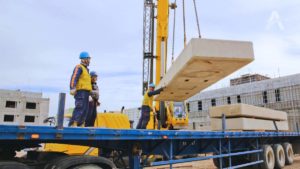How Automation Is Transforming Structural Engineers
Source: ALLTO Software

What is design automation?
Design automation in structural engineering streamlines labor-intensive tasks like modeling, analysis, and rebar detailing. It allows engineers to leverage technology for these tasks, reducing manual effort. While not replacing engineers entirely, it enables them to focus on complex challenges. The trend is supported by software advancements, including API functionality in AEC packages like Allplan, Revit, and Tekla, as well as specialized tools like Allplan’s pythonparts API for reinforcement design automation.
learn how modern software automation help structural engineering
Modern software automation reduces structural engineering task-time, aids design accuracy, and boosts analytical capabilities. Despite the diversity in building designs, most structures rely on similar core elements for functionality and safety. This repetitive nature of construction makes certain parts of the design process ideal for automation, cutting down on the tedious and time-consuming aspects. By automating these tasks, engineers can optimize their expertise and focus on more complex challenges, ultimately improving overall productivity in the field.
Remember that automation has already taken over many of the analysis and design tasks. This is as engineers keep busy feeding data and results from specialized software. Other structural engineering tasks may yet be taken up by intelligent bot and AI based.
Automation isn’t about replacing engineers; it’s about empowering structural engineers. By freeing them from mundane tasks, automation allows them to focus on what they do best: creativity, problem-solving, and applying their expertise to bring bold visions to life.

The power of parametric design
Parametric design, a feature found in many Computer-Aided Design (CAD) tools, enhances CAD functionality significantly. While architects have long utilized parametric design for complex geometries, its benefits for structural engineers are less recognized. By inputting parameters into a design tool with parametric functionality, engineers can quickly replicate identical components across models, saving considerable time.
This automation not only streamlines repetitive tasks but also provides flexibility in shaping structures. Additionally, automation ensures consistency and facilitates managing frequent design changes. By delivering reliable data and boosting efficiency, automation enables structural engineers to explore design alternatives and enhance client satisfaction, ultimately improving construction efficiency.




